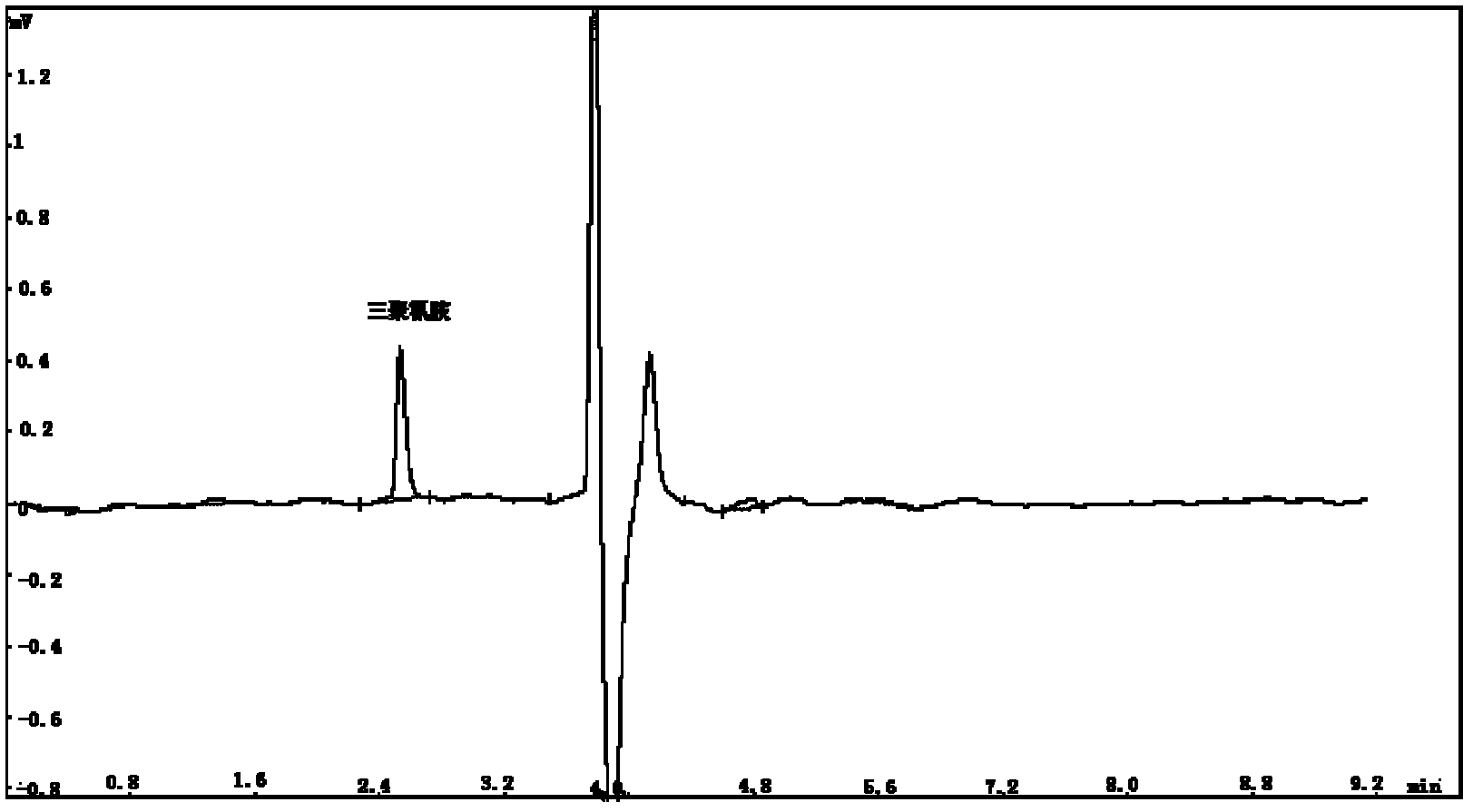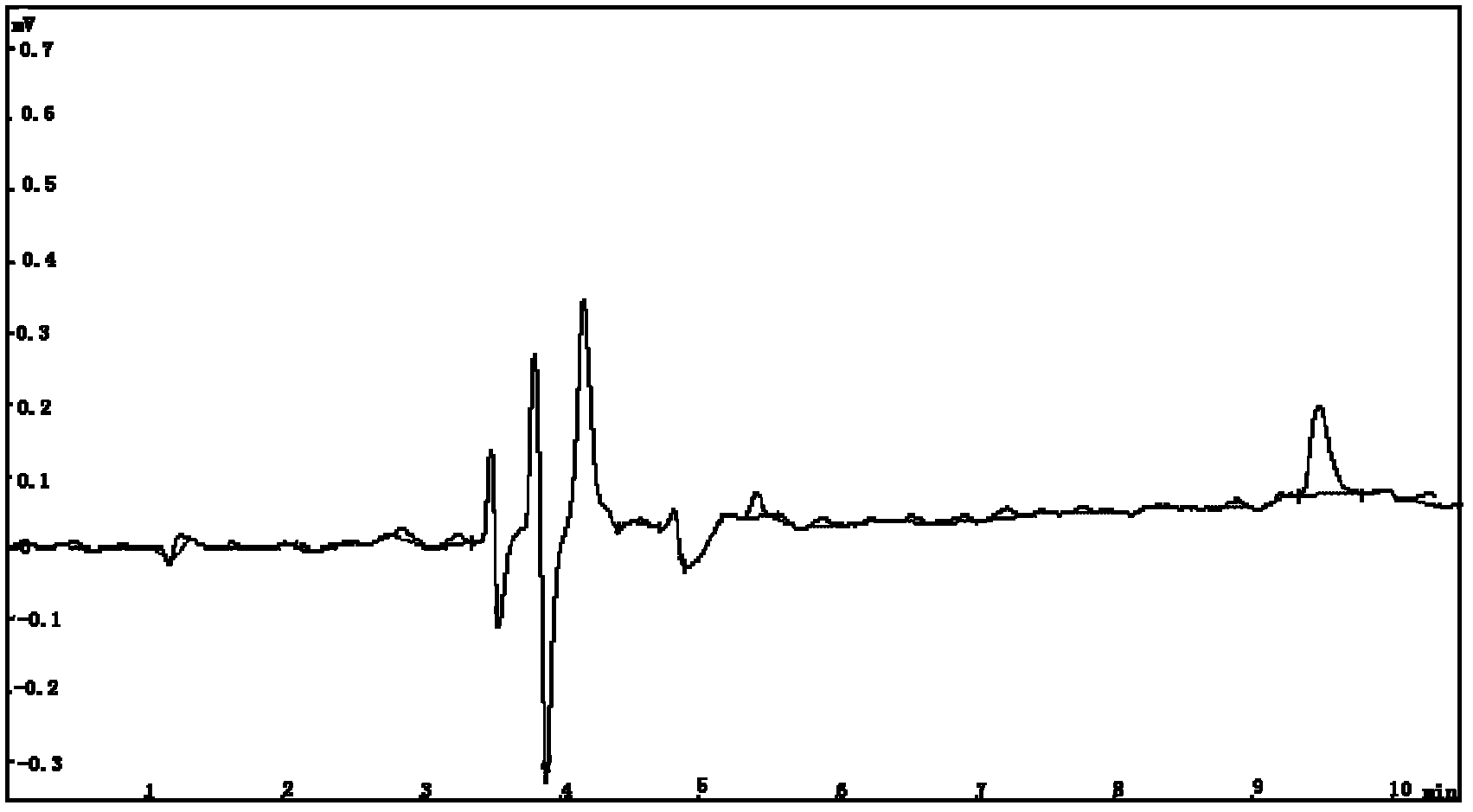Method for detecting tripolycyanamide in aquatic product via pressurized capillary electrochromatography
A capillary electrochromatography and melamine technology, which is applied in the field of food safety and veterinary drug residues, can solve the problems of long analysis time, low sensitivity of liquid chromatography, difficult to configure instruments, etc., and achieves high efficiency of the analysis method, less consumption of organic reagents, and high sensitivity. Effect
- Summary
- Abstract
- Description
- Claims
- Application Information
AI Technical Summary
Problems solved by technology
Method used
Image
Examples
Embodiment Construction
[0024] The present invention will be further described in detail below in conjunction with the accompanying drawings and embodiments.
[0025] In this embodiment, taking saury as an example, capillary electrochromatography is used to detect residual melamine in saury, and the specific steps are:
[0026] 1. Sample preparation: Cut the saury muscle tissue sample with scissors, homogenize it, and freeze it;
[0027] 2. Sample pretreatment:
[0028] (1) Extraction: thaw the sample, accurately weigh 2±0.01g (accurate to 0.01g) homogeneous sample and place it in a 50mL centrifuge tube, add 10mL of 1% trichloroacetic acid and 5mL of acetonitrile, and use a vortex mixer to fully Mix well for 1-2min, centrifuge at 5000r / min for 10min, collect the supernatant, then add 15mL of a mixture of 1% trichloroacetic acid and acetonitrile with a volume ratio of 2:1 to the original centrifuge tube to repeat the extraction once, and combine the supernatant twice .
[0029] (2) Purification: Us...
PUM
| Property | Measurement | Unit |
|---|---|---|
| length | aaaaa | aaaaa |
| particle diameter | aaaaa | aaaaa |
| wavelength | aaaaa | aaaaa |
Abstract
Description
Claims
Application Information
 Login to View More
Login to View More - R&D
- Intellectual Property
- Life Sciences
- Materials
- Tech Scout
- Unparalleled Data Quality
- Higher Quality Content
- 60% Fewer Hallucinations
Browse by: Latest US Patents, China's latest patents, Technical Efficacy Thesaurus, Application Domain, Technology Topic, Popular Technical Reports.
© 2025 PatSnap. All rights reserved.Legal|Privacy policy|Modern Slavery Act Transparency Statement|Sitemap|About US| Contact US: help@patsnap.com



